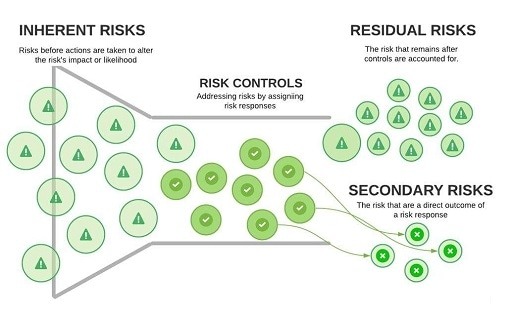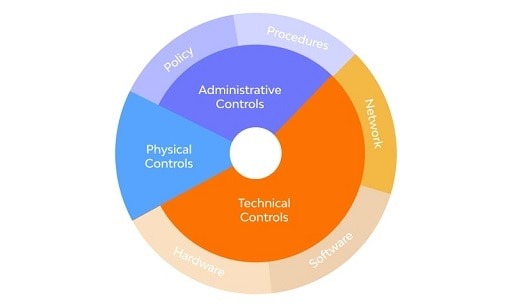What is SQL Injection: Data is the one thing that hackers covet more than anything else. Access to private databases can be a terrific opportunity for malevolent actors to generate a profit from their activities.
Stolen data is quite valuable in illegal marketplaces, and gaining access to such databases can be rather difficult. SQL injection is one method that can be utilized to gain access to confidential data.
But what precisely is a SQL injection, how does it function, and is it possible to stop an attack of this kind from happening?

What is meant by the term “SQL Injection”?
Code is essential to the operation of software programs. Code is also the language that machines use to conduct operations, and it can come in various forms (Python, JavaScript, C++, etc.). Code is also the language that machines use to conduct operations.
SQL injections, often known as SQLis, are similar to other forms of code-based attacks that hackers use frequently against their victims. These make it possible for bad actors to “inject” malicious code into a SQL statement.
Let’s begin by defining what SQL stands for. The abbreviation for Structured Query Language is “SQL.” This is a different type of programming language that is utilized solely for the purpose of working with databases.
SQL, which was developed by IBM in the 1970s, has the ability to alter, store, and retrieve information from databases. Since SQL is used by a large number of database communication systems all over the world, it should come as no surprise that threat actors have developed methods to exploit it in order to target databases.
The communication between databases is mostly accomplished through the use of SQL statements. A command known as a SQL statement can be written in a variety of different ways.
Some users are able to update the data, while others can retrieve or delete it, and still, others can alter the structure of the database itself. When a SQL injection takes place, malicious code is added to an existing SQL statement.
An application or website must, of course, be written in the SQL programming language in order for a SQL injection to even be a theoretical possibility. However, how exactly does this attack vector function?
Suppose you have a line of code that is utilized in a consistent manner by an application. When a malicious SQL injection is inserted by a hacker, a line of code is injected into the program.
This line of code has the potential to interfere with the queries that the application itself makes and sends to its database. When this is done, the database can be exploited in a way that enables the threat actor to examine data that they normally would not have access to. This access would not otherwise be available to them.
The cybercriminal might steal data from this location and use it for their own benefit, or they could sell it on the dark web or somewhere else. They were also able to change the data in the targeted database, add data, or delete data. The amount of damage that is caused by a SQL injection attack is directly proportional to the severity of the attack. Many people run the risk of having their financial information, social security numbers, or other types of private data obtained, which puts them at risk of being abused.
On the other hand, if the attacker is successful in extensively altering the database, then it is possible that large portions of the data will be lost for good. SQL injections, taken as a whole, are capable, with a single attack, of destroying whole databases. Even though they have been around since 1998, they continue to be an issue that threatens our society in this day and age.
When applications were tested to determine whether or not such an attack was present in 2021, the Open Web Application Security Project (OWASP) discovered that there were 274,000 instances of SQL injections were observed.
Types of SQL Injection
There are several variants of SQL injection, the most common of which are known as blind, in-band, and out-of-band injections. Other variants also exist.
When an application or website is attacked by a SQL injection but the HTTP (Hypertext Transfer Protocol) replies supplied do not contain the result of the SQL query, this is known as a blind SQL injection, which can also be referred to as an inferential SQL injection.
To put it another way, the cybercriminal does not receive any information from the database that was compromised. So, tell me, what exactly is the point of this?
A blind SQL injection is when an attacker provides data to the target server and then analyzes the nature of the HTTP response to determine specific aspects of the database. This type of SQL injection is used by cybercriminals. On top of this, there are factors that are linked with the HTTP response that can assist the attacker design another SQL injection that is more effective in order access the database.
There are two primary varieties of blind SQL injection, which are referred to respectively as boolean and time-based. The natures of these two variations are pretty comparable to one another. A boolean SQL injection and a time-based SQL injection both send an array of questions to the database that demand a yes or no answer. However, the time-based SQL injection requires the database to wait for a while before replying to the queries.
In-band SQL injections are the next type to be discussed. SQL injections that are performed in-band enable the operator to carry out the assault and obtain the desired result while utilizing the same channel.
In-band SQL injections are the most popular type utilized simply because they are the simplest to carry out. This is because in-band SQL injections just require a single channel to function properly.
You’ve got an out-of-band SQL injection to finish things off. The attacker is unable to carry out the attack in its entirety using just one channel if they use this variant of an in-band SQL injection, which is practically the same thing. If the target server is simply too slow to produce results, an attack could have to fall back on an out-of-band SQL injection as an alternative.
Because of these circumstances, the procedure is made a little bit more complicated, which means that it must rely on specific features being active on the database that it is attempting to access in order to be successful. For instance, the platform that is being targeted needs to have a problem with its input sanitization. In-band SQL injections are significantly more common than out-of-band SQL injections due to this reason. However, they are not completely absent.
Can SQL Injections attack be avoided?
SQL injections pose a greater risk to businesses and other organizations than they do to average people. However, there are several things that these potential victims can take to lessen the likelihood that they will be struck by such an assault.
Sanitizing input is the most important and widespread strategy for preventing SQL injections. The input is placed through a filtering procedure that searches for potentially harmful characters and removes them. If SQL code is handled before being sanitized, there is a naturally increased risk of a SQL injection occurring.
In addition, parameterized queries can assist you in avoiding SQL injections, which can be a significant headache. These are the types of queries that can’t be run without providing at least one argument. When parameters are applied, it becomes significantly more difficult for cybercriminals to carry out a SQL injection attack effectively.
However, there is no failsafe method to stop a SQL injection from happening. It is almost impossible to keep your devices and systems completely impenetrable, as is the case with many different types of cyberattacks. Sanitizing all inputs and establishing parameterized queries are your best defenses against SQL injections. There is nothing else you can do.
SQL Injections are an old Cyberattack method, but they are still dangerous
SQL injections have been around for more than 20 years, yet they continue to be a security problem for a wide variety of websites and services. Therefore, it is a good idea to keep this form of attack in mind and take the appropriate actions to try and prevent it, as it may at some point in the future represent a threat to your databases.
Would you like to read more about SQL injections-related articles? If so, we invite you to take a look at our other tech topics before you leave!










